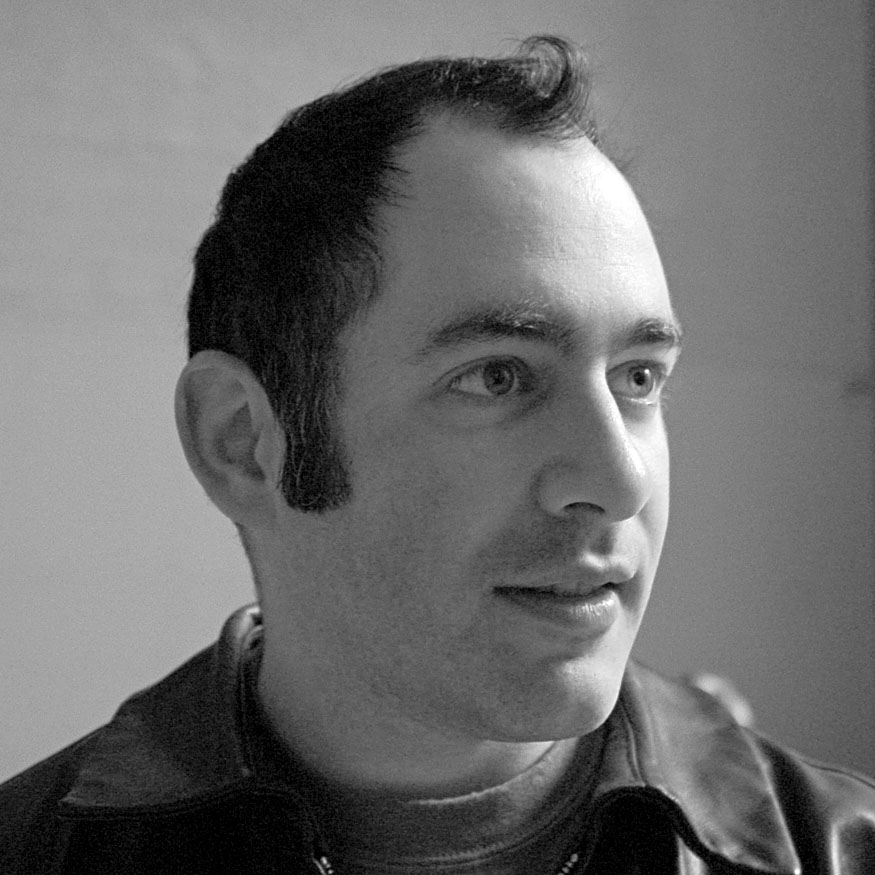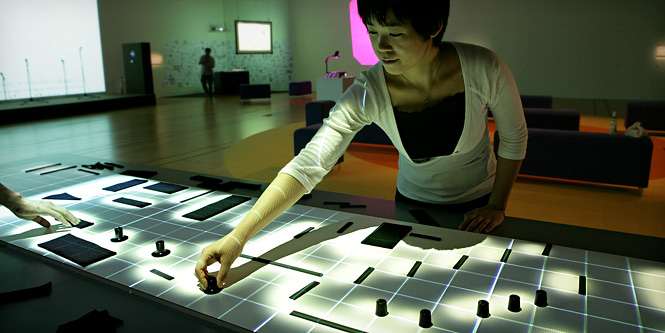THE KHRONOS PROJECTOR
Khronos Projector is an interactive-art installation that allows people to explore pre-recorded movie content by their interactivity. A classic video-tape allows a simple control of the reproducing process (stop, backward, forward, and elementary control on the reproduction speed). Modern digital players add little more than the possibility to perform random temporal jumps between image frames.
By touching the projection screen, the user is able to send parts of the image forward or backwards in time, thus giving the new way of interactivity equipment for the video playback. By actually touching a deformable projection screen, shaking it or curling it, separate "islands of time" as well as "temporal waves" are created within the visible frame. This is done by interactively reshaping a two-dimensional spatio-temporal surface that "cuts" the spatio-temporal volume of data generated by a movie.
The installation uses a video projector, a large tissue-based deformable projection screen, and a sensing mechanism capable of acquiring in real time the deformation of this tissue. While it being displayed, the public (users) can interact with the video playing on the screen. The entire computer engineering was done in C++ program, OpenGL display and Java to produce the touch effect on screen.
A good part about this installation is that people would be able to try the Khronos Projector on videos they could bring themselves. A color printer may be brought nearby in order to print high-resolution snapshots of the interactive video. So, the users can make their own screenshots and bring them back home.
Basically, the users can use the special touch screen to produce certain effects by just twirling, waving and tapping their hands when the video is playing.
The Khronos Project can become one of my inspiration pieces of artwork for future works and projects. Warping the screen with our own hands is quite a fun and the users can actually experimenting with the video to see the outcome that the users want, without having spending too much time on the video, like if we want to see the water effects on something, we can just twirl the screen without having to ‘edit’ the recorded video.
Also, since the users can print and bring the ‘tweaked’ screenshot effect on the video to home, it can be fun to see the satisfaction of the users after experimenting with the equipment, and that will mean a lot to the inventors who work very well with the project. The feed back they got from this project is that the viewers are satisfied with the effect they can create, but in the same time, they hope they can do something like this in ‘real world’. Although that kind of statement might seems impossible to do, but it lets the people know that the technologies that we have today can throttle through the impossibilities.
Site source: http://www.k2.t.u-tokyo.ac.jp/members/alvaro/Khronos/

